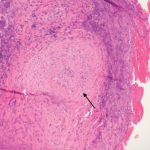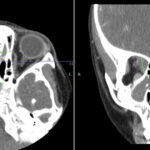Dr. White says mortality rates were highest in the first year after diagnosis. He adds, “If you can weather the storm of the first year of this disease, you tend to do reasonably well. The early disease course is important.”
An interesting finding concerned the rate of subglottic stenosis. Previous literature indicates the condition is more common in children than adults; for example, a much smaller study from the 1990s found subglottic stenosis was five times more common in children than in adults with GPA.4 However, Dr. White says, “We found it was not quite that blatant.” The researchers noted a trend toward a higher rate ratio of the condition in children vs. adults, but this did not reach statistical significance.
Another notable finding: the rate of end-stage renal disease, which the researchers initially thought might occur infrequently in children. End-stage renal disease was actually observed in 16% of children and 14% of adults (although the difference between groups did not reach statistical significance). In people who did progress to end-stage renal disease, the overwhelming majority developed it within the first year. The time to development was one month on average for children, and four months on average for adults.1 “The time to develop end-stage renal disease was rather fast, which really makes one think that once it hits, it hits hard,” says Dr. White.
Moving forward, Dr. White suggests clinicians be vigilant about treating respiratory tract infections in these patients to potentially help prevent hospitalizations. Noting the higher rates of cytopenias and hematological complications in children, he also recommends being cautious with high immunosuppressive doses in this group, perhaps modifying the dose earlier in the disease course. “I do think kids are probably more responsive to the medicines than adults are; perhaps the kids’ immune systems are a little more compliant,” he says. He explains that in some cases, the optimal medication adjustment for body size may need to be better calibrated, so that pediatric patients don’t receive a higher dose than needed.
Limitations
Dr. White notes one of the study’s limitations: It lacked data for patients over age 65. “Presumably, it’s possible that if you are, say, 75, you might be more likely to have complications,” he says. “We would have liked to have had all ages included in the analysis.”
Another limitation: the fact that people without insurance were not recorded in the database, making it difficult to generalize to the population as a whole. “That’s a bit of a challenge,” he says. “How do you capture the people who don’t submit claims?”


